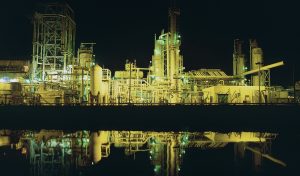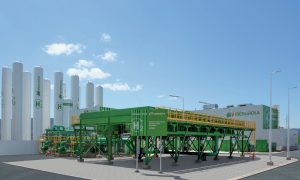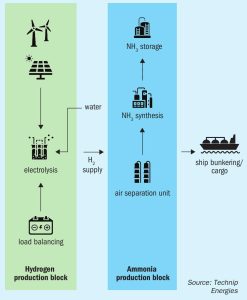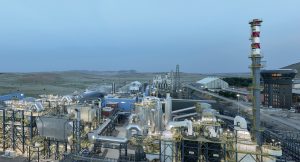
Potash project listing 2024
Fertilizer International presents a global round-up of current potash projects.

Fertilizer International presents a global round-up of current potash projects.

The prospect of a drastic expansion in potassium sulphate production has been linked to a plethora of projects in Australia, Ethiopia, and Eritrea. These have sought to take advantage of market tightness and high price premiums. Yet investor interest in supposedly promising projects has waned over the last few years. In this insight article, CRU’s Alexander Chreky explains the reasons behind the high project failure rate, as well as highlighting some limited successes.

Tessenderlo Kerley International (TKInt) is a major global supplier of water-soluble sulphate of potash plant nutrition and the leading producer of thiosulphate-based fertilizers. In an exclusive interview, we speak to Nicolas White the company’s Portfolio & Knowledge Director, about recent strategic developments. These include major investments in new production, transshipment and storage capacity, production offtake agreements, and product sales and marketing rights.

The US fertilizer industry, ranked fourth globally in terms of total production capacity, has grown and developed alongside an increasingly sophisticated domestic agricultural sector. The Biden administration has earmarked $900 million for investment in fertilizer assets to boost domestic production capacity and reduce input costs to farmers.

Fertiberia’s Puertollano green hydrogen plant was officially inaugurated by Spain’s King Felipe VI in May 2023. The 20MW capacity unit will produce up to 3,000 tonnes of renewable hydrogen annually.

Green ammonia production facilities can be situated in remote areas with access to often fully off-grid renewable power supply. This article examines plant concepts and discusses the challenges and solutions for these plant architectures. Through a case study, an efficient and innovative methodology to compare options and optimise the sizing of the plant is presented. The methodology addresses the intermittency of the power production, the flexibility limits of the main process units, and the costs of investment and operation, using proprietary techno-economic dynamic simulation software, Odyssey.
Shell Deutschland has taken a final investment decision (FID) to progress REFHYNE II, a 100 MW renewable proton-exchange membrane (PEM) hydrogen electrolyser at the Shell Energy and Chemicals Park Rheinland in Germany. Using renewable electricity, REFHYNE II is expected to produce up to 44 t/d of renewable hydrogen to partially decarbonise site operations. The electrolyser is scheduled to begin operating in 2027. Renewable hydrogen from REFHYNE II will be used at the Shell Energy and Chemicals Park to produce energy products such as transport fuels with a lower carbon intensity. Using renewable hydrogen at Shell Rheinland will help to further reduce Scope 1 and 2 emissions at the facility. In the longer term, renewable hydrogen from REFHYNE II could be directly supplied to help lower industrial emissions in the region as customer demand evolves.
Join us at the CRU Sulphur + Sulphuric Acid 2024 Conference and Exhibition in Barcelona, 4-6 November, for a global gathering of the sulphur and sulphuric acid community. Meet leading market and technology experts and producers, network, share knowledge, and learn about market trends and the latest developments in operations, process technology and equipment.

As more focus extends to a circular economy, there are industry wide discussions on whether future global sulphur demand will be challenged by the energy transition and decarbonisation. Hannes Storch, Collin Bartlett and Marcus Runkel of Metso discuss how the recycling of pyrite tailings could address some of these issues.

One of the biggest areas for new sulphuric acid demand in the past few years has been in nickel processing plants, particularly in Indonesia. A decade ago, incoming president Joko Widodo took a strategic decision that the country needed to try and capture more of the value chain from its mining and mineral industry, which was focused at the time on exports of aluminium, copper and nickel ores and concentrates, mainly to China. Over the past 10 years, the export of raw ores has been progressively restricted and companies instead compelled to build downstream processing plants for the metals. With China the main recipient of Indonesian ores, much of the investment in metals processing in Indonesia has been via Chinese companies.